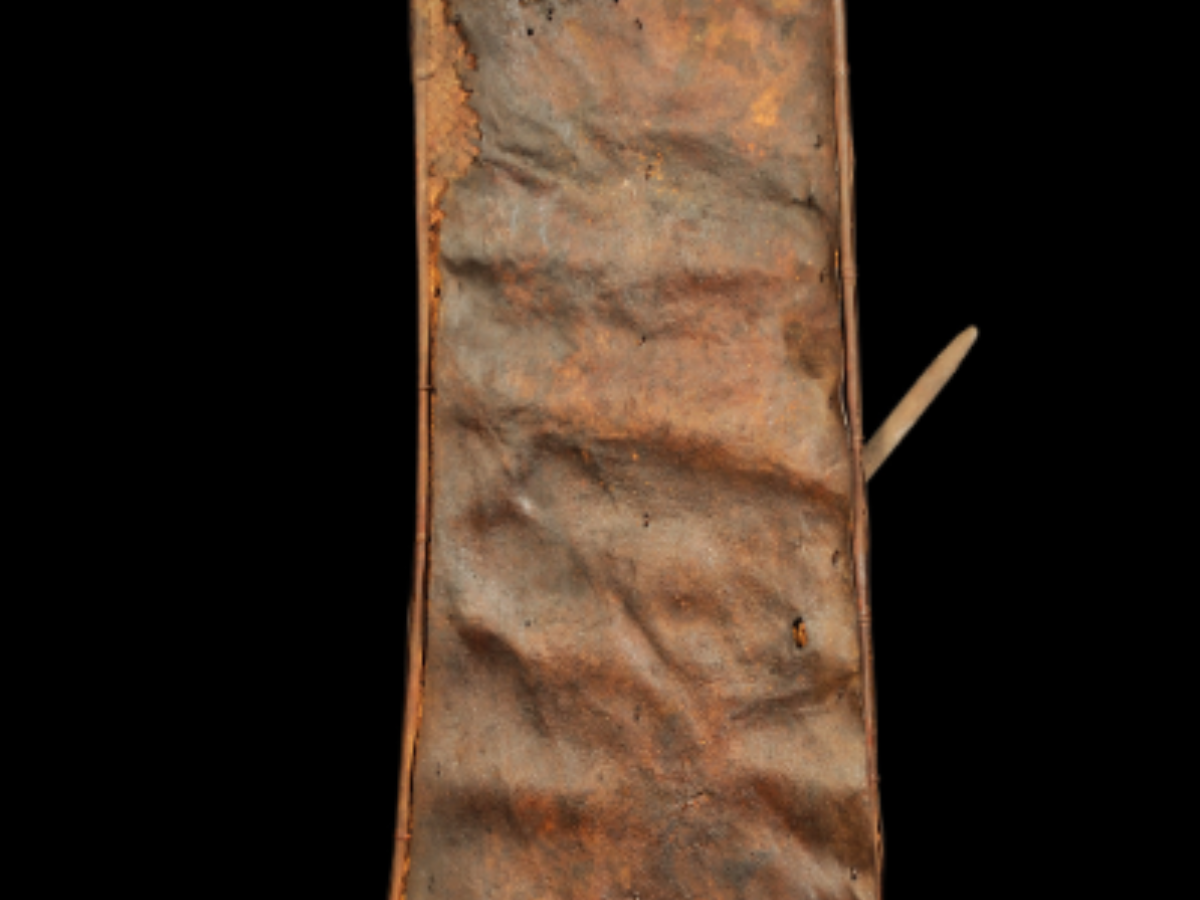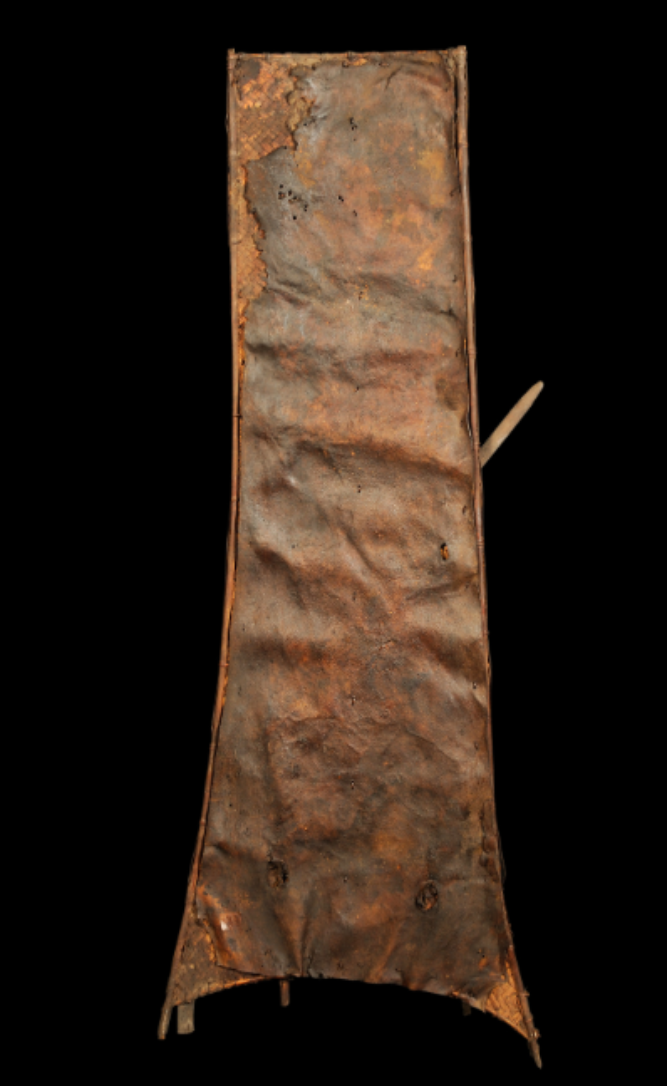State
Tribe Name
Art Type
short description
It is bamboo shield of the Naga tribe. This is an example of raw indigenous crafting fused with function and symbolism. Historically, these equipment’s had been used in wars and hunting; these equipment’s display the martial heritage of the Naga people of Nagaland.
Thumbnail

Filter Postion
Left
Filter Background
Off
Theme
Filter Header Image

content
Image

description
It is bamboo shield of the Naga tribe. This is an example of raw indigenous crafting fused with function and symbolism. Historically, these equipment’s had been used in wars and hunting; these equipment’s display the martial heritage of the Naga people of Nagaland.
This shield is made up of numerous bamboo splits crisscrossed together for weaving. An intentional narrow top designed towards broad base or oval-shaped base ensures better coverage and maneuverability. The dorsal surface (outer part) has been strengthened further with the application of animal hide over it, which acts along the lines of protective and also identity preservation. Whereas the ventral side or internal surface displays the traditional type of plaiting done with bamboo referring the expert weaving and resource usage of the tribe.
These were shield warriors of the Naga during their headhunting phase-they were used as shields from physical harm and also as shields from strong cultural identity. Similarly, the ornamentations with animal materials indicated social position, gallantry, and even clan identification. Indeed, this shield is more than just a weapon: it is life as art and tribal honor, passed down through the years. Today, kept as a part of India's ethnographic legacy, it hails loud and proud to testify the relation of the Naga tribe with nature, war, and art.
Verrier Elwin, The Nagas in the Nineteenth Century
This shield is made up of numerous bamboo splits crisscrossed together for weaving. An intentional narrow top designed towards broad base or oval-shaped base ensures better coverage and maneuverability. The dorsal surface (outer part) has been strengthened further with the application of animal hide over it, which acts along the lines of protective and also identity preservation. Whereas the ventral side or internal surface displays the traditional type of plaiting done with bamboo referring the expert weaving and resource usage of the tribe.
These were shield warriors of the Naga during their headhunting phase-they were used as shields from physical harm and also as shields from strong cultural identity. Similarly, the ornamentations with animal materials indicated social position, gallantry, and even clan identification. Indeed, this shield is more than just a weapon: it is life as art and tribal honor, passed down through the years. Today, kept as a part of India's ethnographic legacy, it hails loud and proud to testify the relation of the Naga tribe with nature, war, and art.
Verrier Elwin, The Nagas in the Nineteenth Century
Image Mode
landscape
promoted
On
Verified
Off
